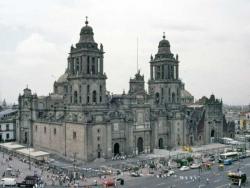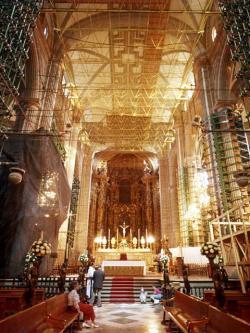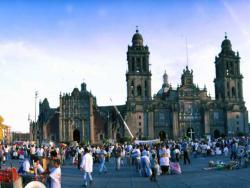Metropolitan Cathedral
1998 World Monuments Watch
Ever since the last building stone was secured in 1813, the Metropolitan Cathedral has been sinking and leaning into its spongy foundation. The site chosen for Latin America's largest cathedral – this combination Gothic, Renaissance, and Baroque icon – was a landfill over a lagoon and the foundations of Tenochtitlan, the capital city of the Aztec empire. Within its 14 chapels are five gilded altars with innumerable paintings, including a notable collection of altarpieces, statues, and portraits of archbishops. To remedy its unstable condition, heavy elements from the building have been removed to lighten the load and steel and concrete piers have been inserted in the foundations. But the constant pumping of subterranean wells for drinking water has exacerbated the cathedral's problems. A recently added forest of steel structural scaffolding installed within the building provides temporary stability but also adds more weight. The scope of work needed is daunting but the cathedral's role in the life of Mexico City is too great to ignore.
Since the Watch
The ambitious, $33 million project to stabilize the cathedral was completed with success, breaking new ground in the field of geotechnical engineering. Carefully designed excavation under the structure allowed the cathedral to sink further, but in such a way that reduced its menacing tilt. The soil under the cathedral was then reinforced through the injection of grouts, in order to reduce further settlement. The steel shoring installed in the interior was then safely removed. January 2011



